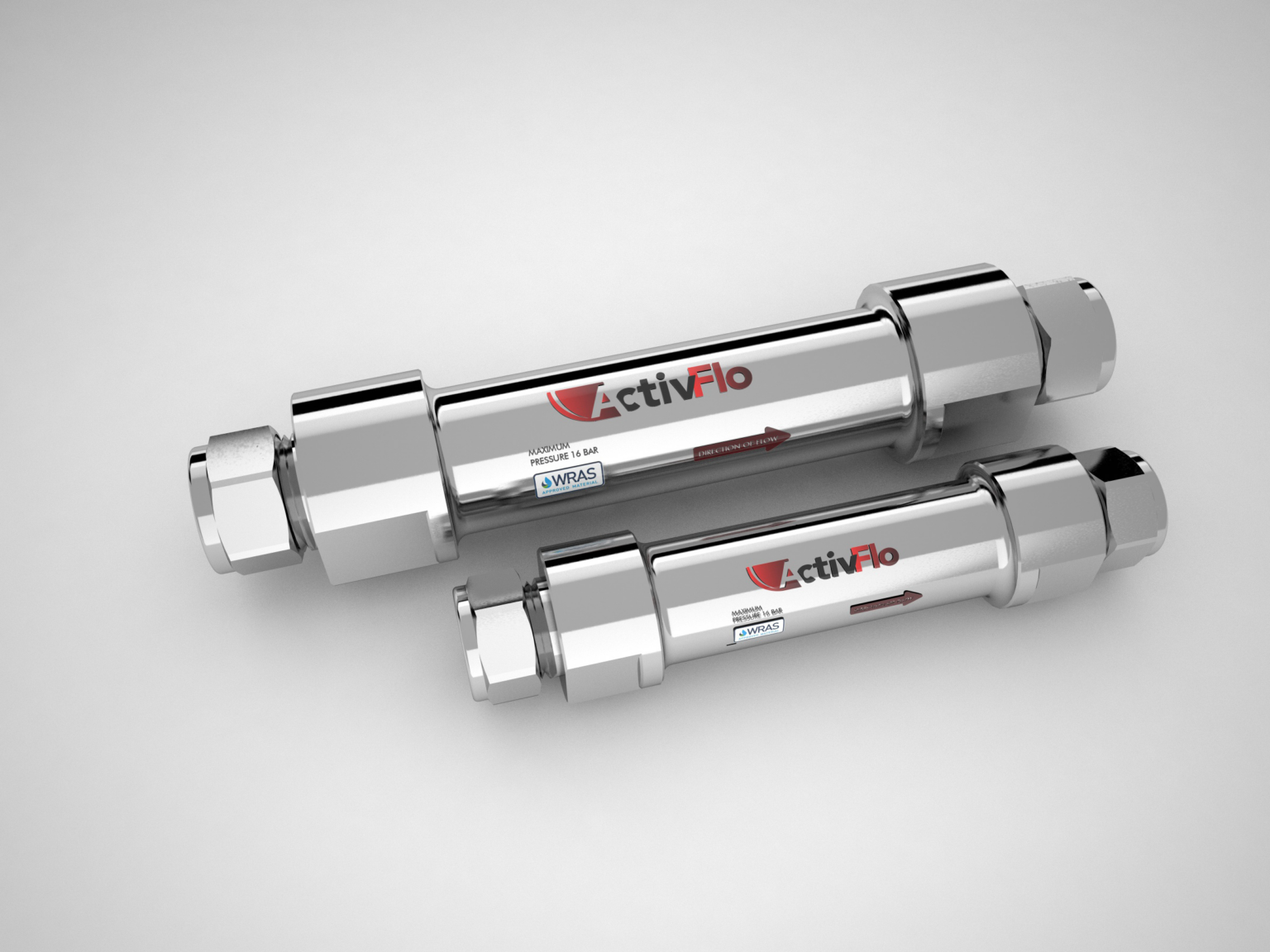ActivFlo Water Conditioners - Magnetic vs Catalytic treatment
Manufactured in the UK, Inta’s range of ActivFlo water conditioners are designed to combat the damaging effects of hard water in domestic and commercial properties.
There are many products on the market that aim to beat limescale using different methods of water conditioning. Here, we’ve set out the key differences between magnetic and catalytic treatment and explain why the ActivFlo catalytic range wins the race.
Memory effect post treatment
Although magnetic systems create a calcium carbonate crystal compound in a similar way to a catalytic conditioner, the carbonate compound created through magnetism is not as stable and can re-dissolve back into the water quite quickly. This means that in systems where pumps are used or there is a dwell time between treatment and when the water is used, treatment can be significantly degraded, leaving water likely to cause scaling.
Catalytic systems create a far more stable calcium carbonate crystal which lasts much longer. Magnetic manufacturers will guarantee treatment lasts between 24 to 48 hours. Treatment from catalytic systems can last up to three months. Magnetic systems should not be installed before pumps where the treatment will be reversed by the pumps. However, catalytic systems can be installed prior to pumps and the treatment will maintain itself through the rest of the water network.
This means that more consideration needs to be given to how magnetic systems are used and where they are installed. If used in large network systems often they cannot be used at the point of entry as the treatment will not last through the network. This means that most larger systems require a magnetic conditioner installed before each piece of equipment (point of use). This often requires many systems with a far higher installation cost. Catalytic systems can often treat a large system with a single product giving a much lower capital expenditure cost and far lower install cost.
Turbulence and surface area
The most successful conditioners require two elements to make them so effective, an electrical potential combined with an element of turbulence as the water passes through it. With the ActivFlo catalytic system, Inta has created a unique surface make up that provides a galvanic effect, combined with a specific internal shape that causes tiny pressure drops which complete the conditioning process. Magnetic systems do not have the latter and do not create enough turbulence in the desired locations to create a more complete treatment level.
Magnetic degradation
Magnets are quite sensitive to two elements, vibration and heat, both of which can be present in water systems. Either or both of these can significantly shorten the effective lifespan of a magnetic conditioner.
Larger diameters
Larger diameter magnetic systems can be very expensive and have a significantly reduced effectiveness compared to their smaller diameter equivalents. The strength of the magnets does not increase, so with the increasing bore through the pipe a larger number of magnets need to be used. This significantly increases cost and weight, whilst underperforming compared to their large diameter catalytic counterparts.
As manufacturers of both catalytic and dual treatment water conditioners (magnetic and catalytic), Inta holds a firm belief in the superior benefits of catalytic treatment for almost all settings. Not only does it not manufacture a stand alone magnetic system, its only dual treatment conditioner is designed for specific commercial environments with variable flow rates.
For more information about Inta's ActivFlo range of catalytic water conditioners, visit: https://activ-tec.com

